An ice age is a period of time where global temperatures drop so significantly that glaciers advance and cover over one third of Earth’s surface. During an ice age, a glacial is the period of time where glacial advancement occurs. An interglacial is the warmer period of time between ice ages where glaciers retreat and sea levels rise.
When the temperatures drop, ice sheets spread from the Poles and cover much of the other continents. With so much water locked up as ice, sea levels fall, and land bridges form between continents, like the currently submerged connector across the Bering Strait between Asia and North America. Land bridges allow animals and humans to migrate from one continent to another.
During warm spells, the ice retreats and exposes mountains that have been reshaped, rivers that have been reborn, and the giant basins into which they flow, like the Great Lakes. Plants and animals that sought warmth and comfort toward the Equator return to the higher latitudes.
There have been five significant ice ages throughout Earth’s history.
- Huronian (2.4 – 2.1 billion years ago)
- Cryogenian (350 – 635 million years ago)
- Andean-Saharan (460 – 430 million years ago)
- Karoo (360 – 260 million years ago)
- Quaternary (2.6 million years ago to present)
We will only spend time on the Quaternary period, in which we still reside.
Quaternary Ice Age
At the start of the Quaternary Ice Age, the continents were just about where they are today. Throughout the period, the planet has wobbled, causing glacial periods to come and go. The continents reached their present-day outline at the end of the last glacial period, known as the Paleolithic Ice Age.
Since the outset of the Quaternary, whales and sharks ruled the seas, topping a food chain with otters, seals, fish, squid, crustaceans, urchins and plankton filling in descending rungs.
On land, the chilliest stretches of the Quaternary saw mammals like mammoths, rhinos, bison and oxen grow massive and don shaggy coats of hair. They fed on the small shrubs and grasses that grew at the ever-moving edges of the ice sheets.
The most recent glacial period, the Paleolithic Ice Age, often known simply as the “Ice Age,” reached peak conditions some 18,000 years ago. It is a confusing name, because this is a glacial period within the Quaternary Ice Age.
This is also the period of time in which both mammals and humans began to migrate.
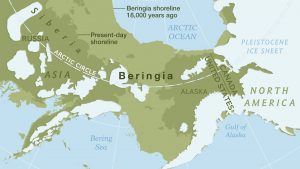
From the Smithsonian Magazine online: The traditional story of human migration to the Americas goes like this: A group of stone-age people moved from the area of modern-day Siberia to Alaska when receding ocean waters created a land bridge between the two continents across the Bering Strait. Once across, the giant Laurentide and Cordilleran ice sheets, which blocked southern Alaska and the Yukon Territory in western Canada, halted the migrants’ progress. But about 13,000 years ago, the ice sheets began retreating, opening a 900-mile-long ice-free corridor following the Canadian Rockies. This, many researchers believe, is how the Clovis culture moved south and colonized other parts of the Americas.
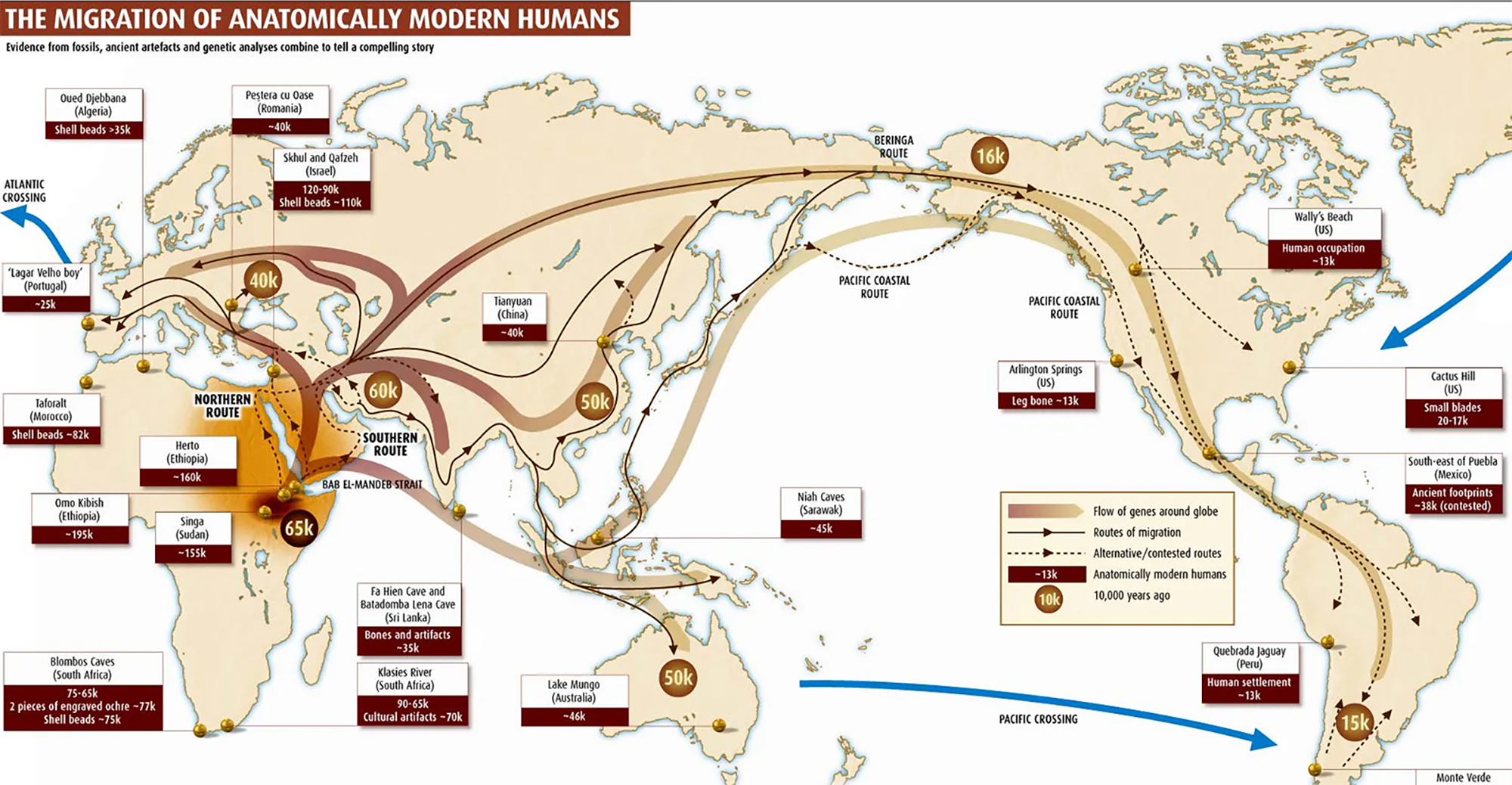
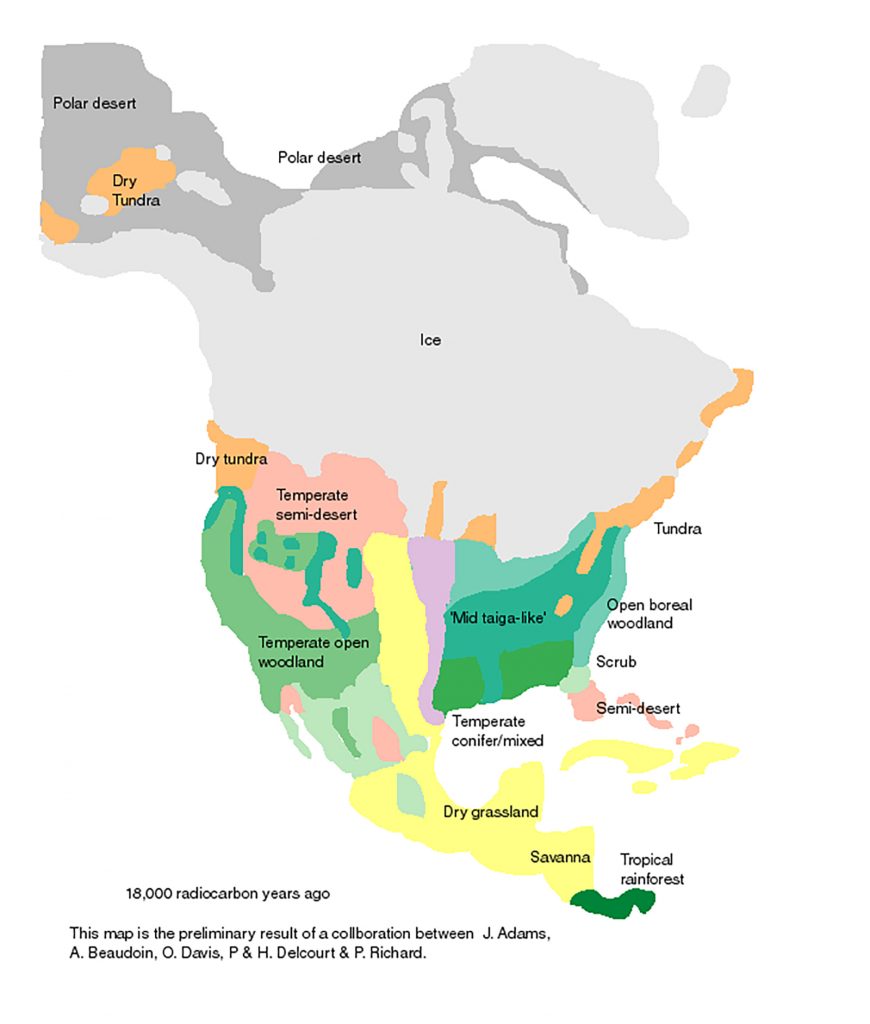
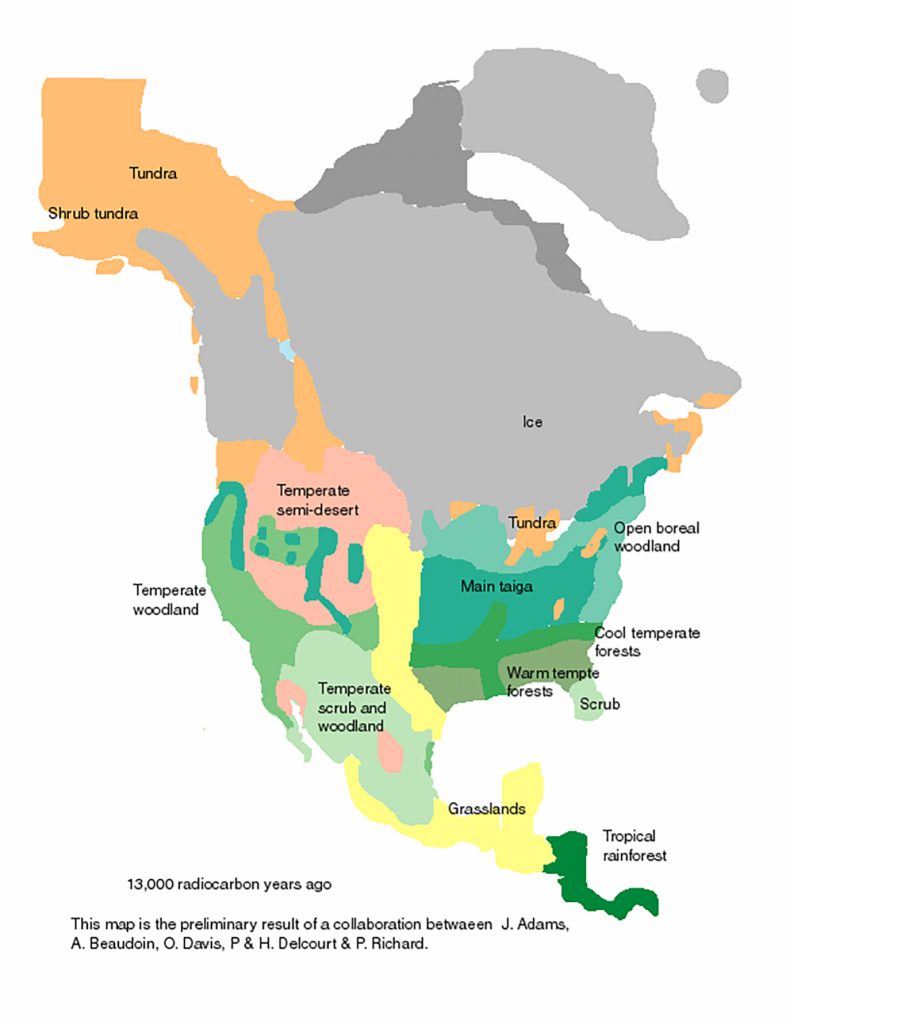
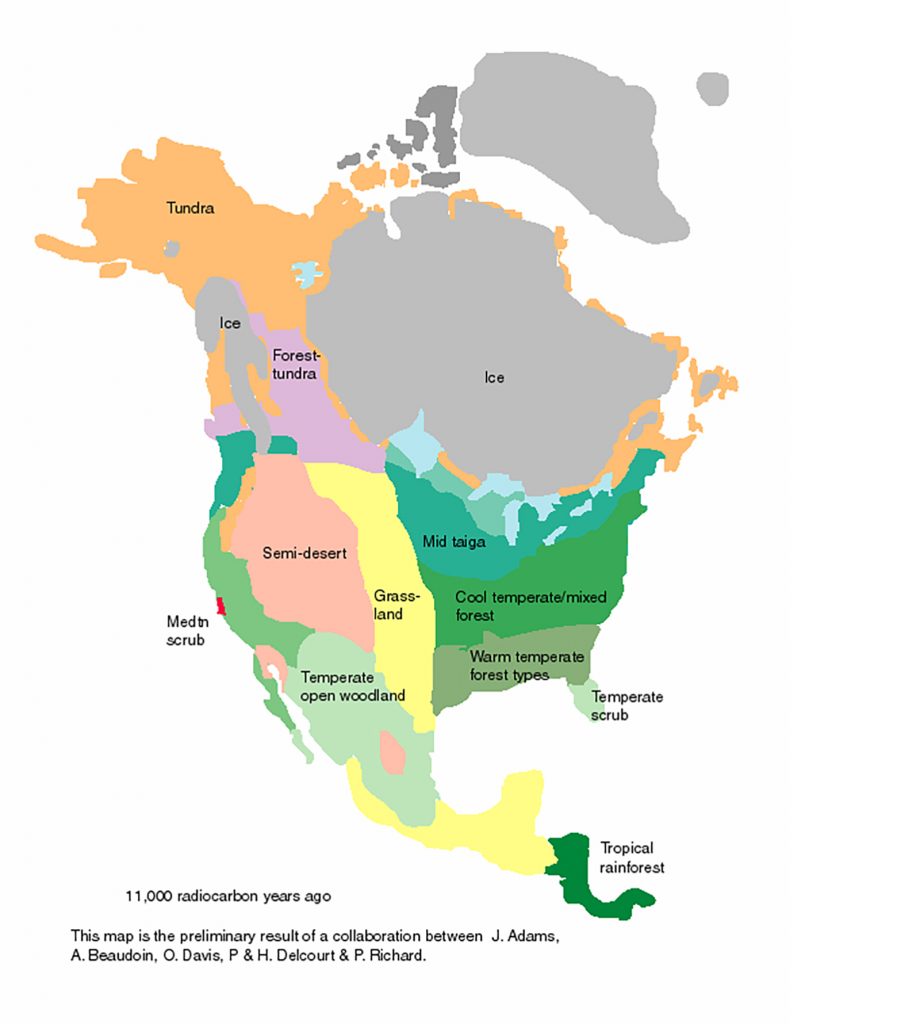
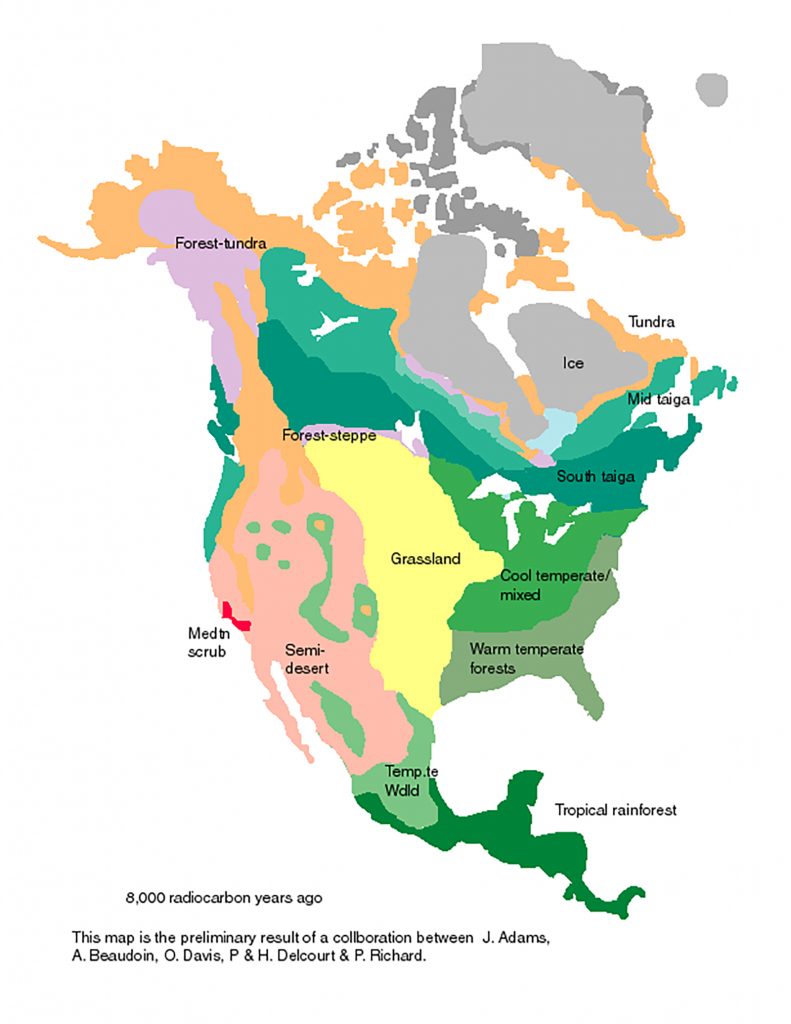
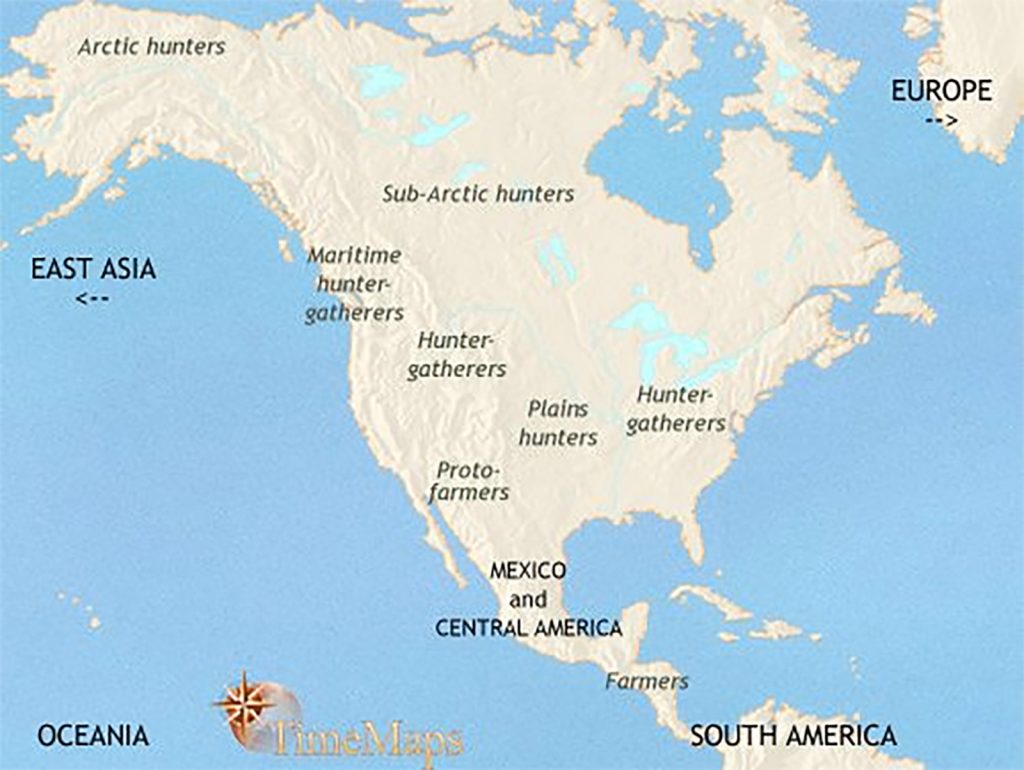
When The Europeans Arrived…
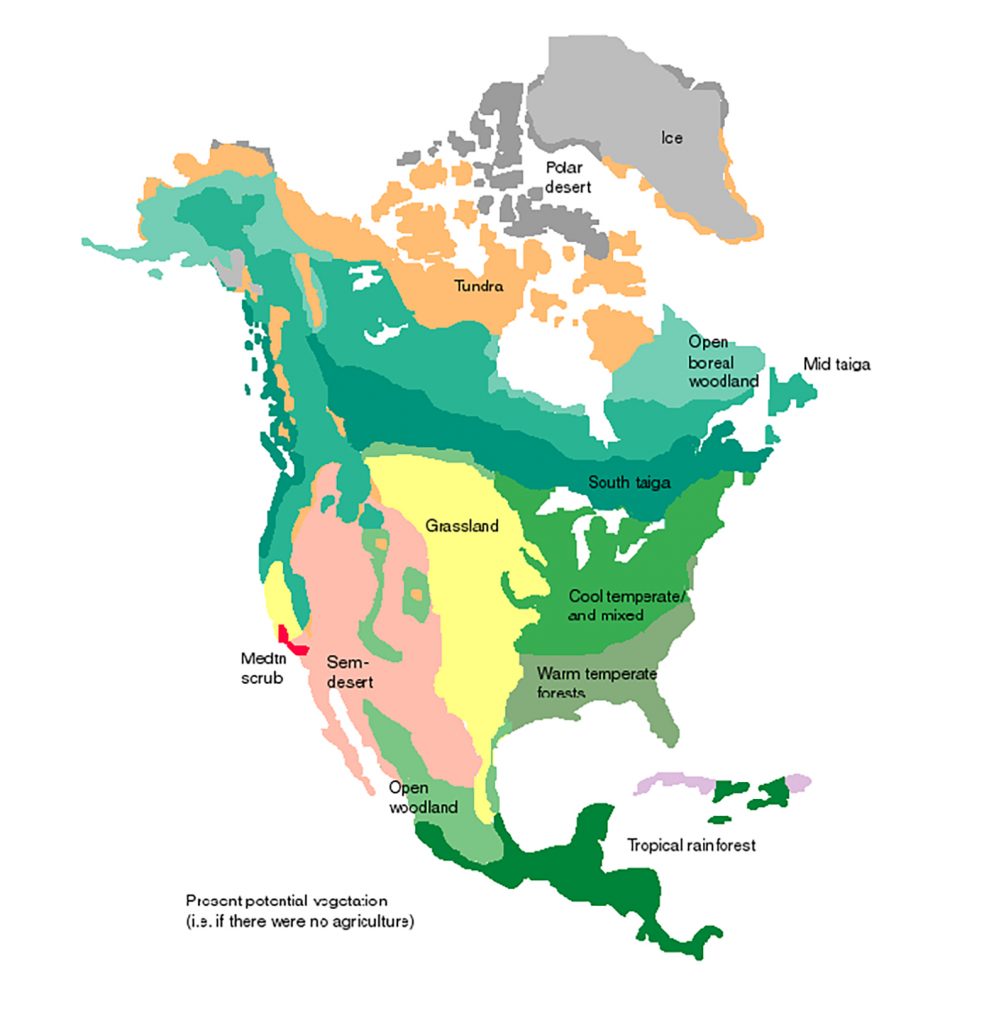
The Series
-
- Indigenous Peoples of Pulaski County
- The Land, From Ice To European Arrival
- The People, From Ice To European Arrival
- Europeans Arrive
- French Fur Trade & The Beaver Wars
- Indian Wars, Pre-Revolutionary War (The Colonial Wars)
- Revolutionary War
- Indian Wars, Post-Revolutionary War
- United States Takes Shape
- Indiana Takes Shape
- Pulaski County Takes Shape
- Indian Removals, 1700 – 1840
- The Potawatomi, Keepers Of The Fire
- Trail Of Death
- The Chiefs Winamac
- 7 Fires of the Anishinaaabe
